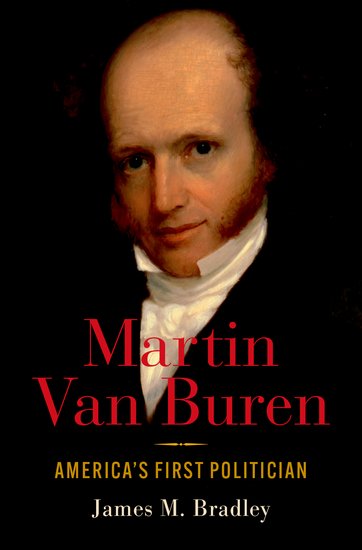Martin Van Buren’s legacy, often overshadowed by the political innovations of his era, has relegated him to a supporting role in the narratives of his towering contemporaries, such as Andrew Jackson, Henry Clay, and John Quincy Adams. James M. Bradley’s Martin Van Buren: America’s First Politician, the first major work on Van Buren in decades, seeks to give this architect of modern American politics his due. But Bradley isn’t here to suggest that Van Buren was an overlooked presidential figure unjustly forgotten by history. Instead, he explicitly states, “This book will not argue for Van Buren’s ‘greatness’ (a questionable concept to begin with); nor will it call for a reassessment of his years in the White House. Rather, it will highlight his role in the struggle for power in antebellum America.” Bradley positions Van Buren not as a great man of history, but as a defining figure in shaping the nation. “He built and designed the party system that defined how politics was practiced and power wielded in the United States.”
Bradley adeptly places Van Buren’s early life within the context of the post-Revolutionary War era, marked by lingering Old World traditions, wealth, and social hierarchies. But he also underscores the period’s potential for change, especially in the political arena. Bradley clarifies that the Jeffersonian Democrats and Federalists of this time were not the well-oiled political machines we recognize today, but rather loose affiliations or cliques rallied around key figures. He notes, “Politicians in the late eighteenth and early nineteenth centuries identified themselves as Federalists or Republicans, but these labels primarily signaled allegiance to the visions of Hamilton, Washington, and John Jay for Federalists, or Jefferson and Madison for Republicans. These groups functioned more like influential cliques than structured parties.” From this foundation, Bradley traces how Van Buren and his allies revolutionized this system, establishing the modern political party framework through the Democratic Party, which utilized conventions, enforced party discipline, and built local organizations, thus paving the way for the two-party system we see in American politics today.
Van Buren’s early legal and political career is particularly compelling, especially his involvement in tenant-landlord disputes, including high-profile cases against the powerful Livingston family. These legal battles not only revealed the deep tensions between entrenched elites and ordinary citizens but also foreshadowed the broader social and political conflicts of the Jacksonian era. Through these cases, Van Buren positioned himself as a staunch advocate for the common people, boosting both his reputation and political influence in New York. Another highlight is Van Buren’s political maneuvering on the Erie Canal, shifting from opponent to supporter, a shift Bradley uses to emphasize his sharp political instincts, remarkable adaptability, and long-term vision. Bradley’s exploration of this period is not only insightful, shedding light on an often-overlooked chapter of Van Buren’s life, but also thrilling for all the behind-the-scenes drama, making it a truly engaging read.
